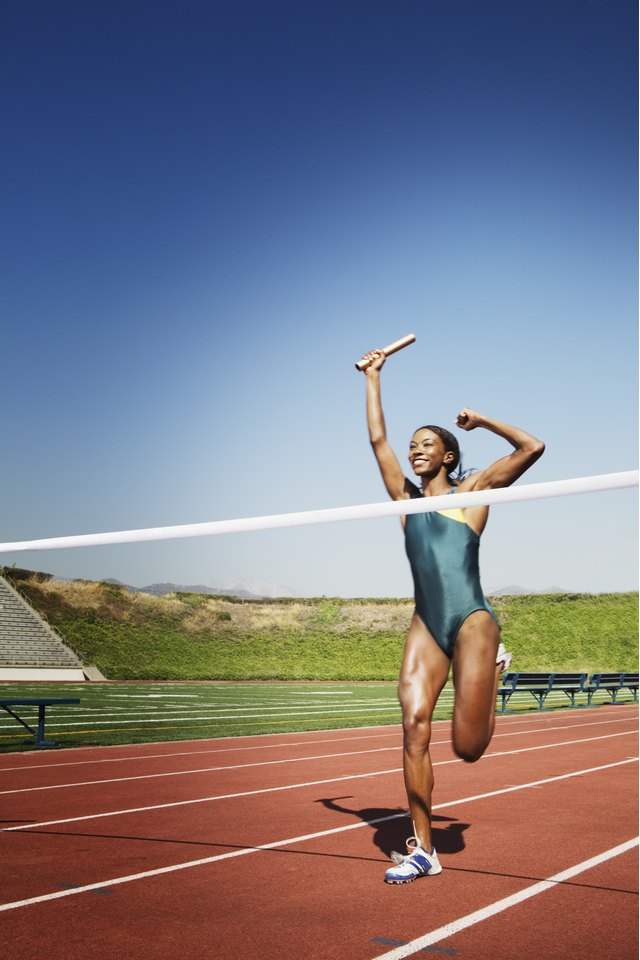What Are the Major Bones That Move While Running?

When you run, you engage many major bones among the 206 in the human body. The process begins when your feet strike the ground. It continues through your legs up into your hips and spine. While your lower body is primarily engaged in running, you will also engage upper-body bones such as the ones in your head and arms.
Feet First
The process of running begins when your feet strike the ground -- first one, then the other. You can land on either your forefoot or your hindfoot, although one review article published in "Gait and Posture" in 1998 noted that approximately four-fifths of distance runners went the hindfoot route. This means that you engage several bones of the feet as you run: the five metatarsals in front, the calcaneus, or heel, in back and the talus, or ankle.
Leg Room
As your feet connect with the ground, your legs are moving on several fronts: at your ankles, your knees and your hip sockets. All this activity engages three leg bones in particular: your thigh bone or femur and your lower leg bones, the tibia and the fibula. Moving the foot will affect moving the lower leg, while the knee is where your lower and upper leg meet and your upper leg influences your hips.
Hips Don't Lie
Running is an up-and-down activity that researcher Tom F. Novacheck appropriately likened to a pogo-stick in his 1998 "Gait and Posture" article, "The Biomechanics of Running." It would thus make sense that when you run, there is enough hip movement to make Elvis Presley or Shakira proud. From the medical literature, it appears that your hips may rotate, tilt forward and stabilize at various points during your running gait.
Going Up
All this focus on the lower parts of the body should not obscure the fact that other major bones come into play while you run. In fact, Drs. Sheila A. Dugan and Krishna P. Bhat noted in their 2005 "Physical Medicine and Rehabilitation Clinics of North America" article, titled "Biomechanics and Analysis of Running Gait," that when health care professionals analyze runners' gait, they look at not only lower-body movements, but also how they position their head, neck and arms. This indicates the importance of the skull, spine and arm bones, also known as the humerus, ulna and radius.
Writer Bio
Based in Massachusetts, Richard Tenorio has been a full-time sports writer and editor since 2002. His sports articles have appeared in the "Daily Item" of Lynn, Mass. Tenorio holds a B.A. in history from Harvard University and an M.S. in journalism from Columbia University.
